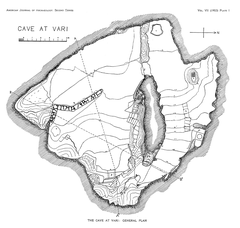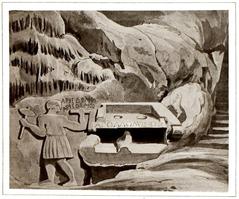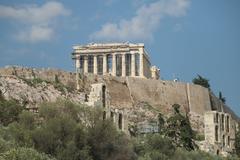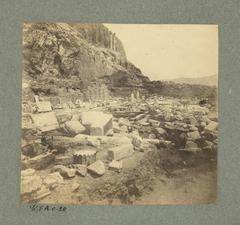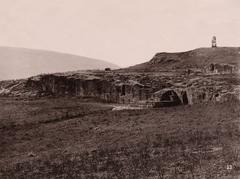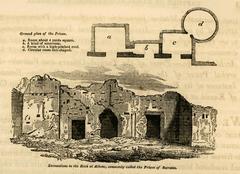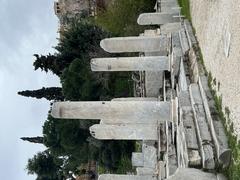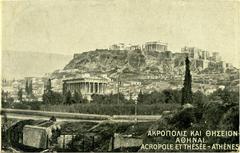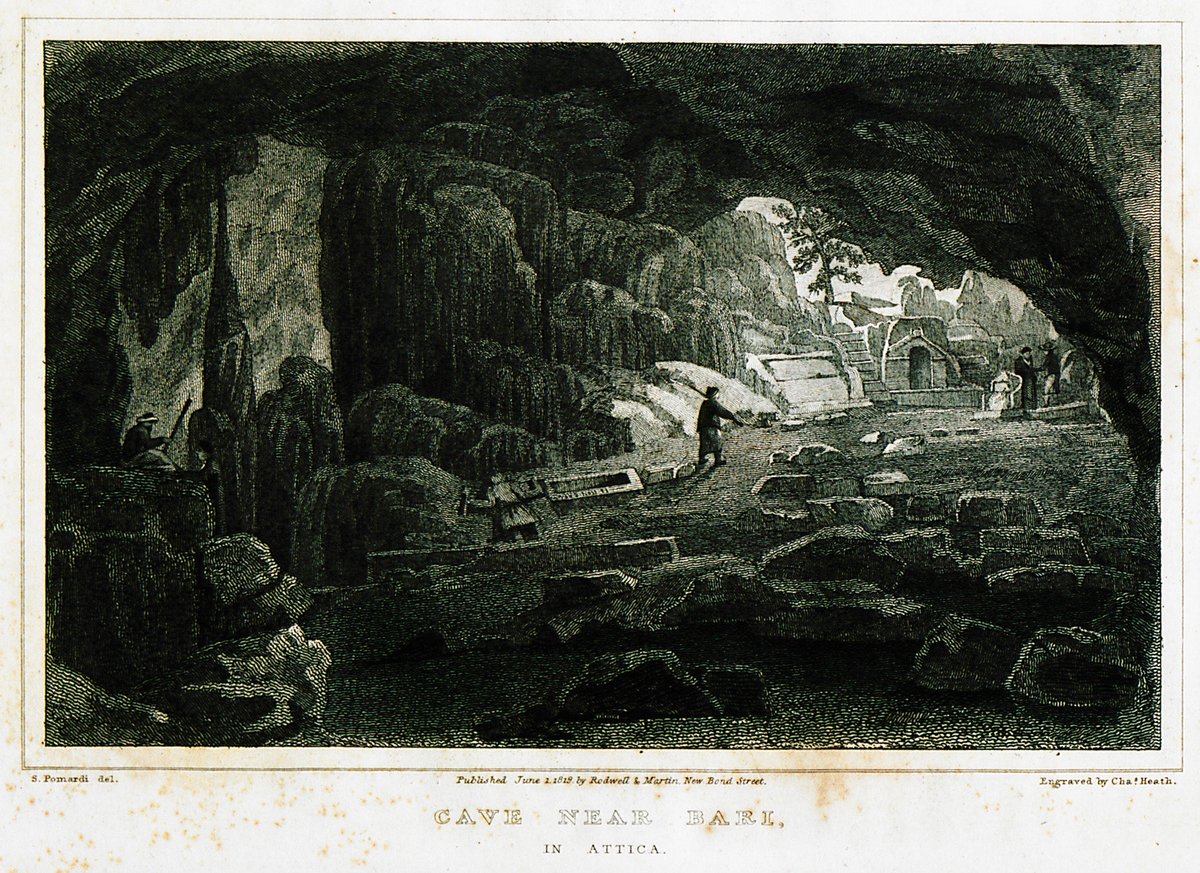
Nymfoliptos Cave Visiting Hours, Tickets, and Historical Significance in Piraeus, Greece
Date: 01/08/2024
Introduction
Discover the enchanting Nymfoliptos Cave in Piraeus, Greece, an ancient site that captures the imagination with its rich history and mythology. This guide provides a comprehensive overview, delving into the cave’s historical significance, visitor information, travel tips, and nearby attractions. Located in the historic city of Piraeus, Nymfoliptos Cave, also known as the Cave of Pan or Archedemos, dates back to around 550 BC when the sculptor Archedemos of Thera transformed it into a sanctuary dedicated to the worship of the Nymphs and Pan. His artistic contributions, including signed stalactite reliefs, remain visible and add to the cave’s allure (Flickr). The cave’s significance is further enriched by Greek mythology, particularly the tragic tale of the nymph Melissani, who fell in love with Pan and ultimately met a sorrowful end (Greece Is).
Nymfoliptos Cave’s archaeological importance is highlighted by the discoveries made by Greek archaeologist Syridon Marinatos. These artifacts are now housed in the Archaeological Museum of Argostoli, providing valuable insights into the cave’s past (Greece Is). Today, the cave is a popular destination, drawing visitors with its well-preserved geological features and historical significance. This guide aims to equip you with all the necessary information for a memorable visit, from ticket prices and visiting hours to travel tips and nearby attractions.
Table of Contents
- Introduction
- Historical Background
- Modern-Day Significance
- Accessibility and Visitor Information
- Cultural Impact
- Preservation Efforts
- FAQ
- Conclusion
Historical Background
Early Inhabitants and Initial Use
The Nymfoliptos Cave, located in Piraeus, Greece, has a rich and storied history that dates back to ancient times. Around 550 BC, the cave became the refuge of the sculptor Archedemos, who hailed from the island of Thera. Archedemos, who later became known as “nympholyptos” (possessed by the nymphs), transformed the cave into a sanctuary dedicated to the worship of the Nymphs and Pan. His artistic contributions to the cave include signed stalactite reliefs, which remain visible on the cave walls to this day (Flickr).
Religious Significance and Mythology
The cave’s religious significance is deeply rooted in Greek mythology. It was not only a place of worship for the Nymphs and Pan but also a site steeped in legends. One such legend involves the nymph Melissani, who, according to myth, fell in love with Pan. Her unrequited love led to her tragic suicide, adding a layer of mystical allure to the cave (Greece Is).
Abandonment and Rediscovery
The cave’s use as a worship site saw a decline in the middle of the 3rd century BC. However, it experienced a resurgence during the Neoplatonist period until the late 4th century AD. This period marked the final phase of its use as a religious sanctuary. The cave was later mentioned by the traveler R. Chandler in 1765 and subsequently visited by notable figures such as Lord Byron and King Otto (Flickr).
Archaeological Discoveries
The Nymfoliptos Cave has been the site of significant archaeological discoveries. Greek archaeologist Syridon Marinatos unearthed numerous artifacts within the cave, many of which are now housed in the Archaeological Museum of Argostoli. These artifacts provide valuable insights into the cave’s historical and cultural significance (Greece Is).
Geological Features
The cave’s geological features are as fascinating as its historical background. The solubility of limestone in rainwater over millennia has created a rich tapestry of stalactites and stalagmites within the cave. These formations add to the cave’s allure, making it a natural wonder as well as a historical site (Greece Is).
Modern-Day Significance
Today, the Nymfoliptos Cave stands as a testament to Greece’s rich cultural and historical heritage. It is a popular tourist destination, offering guided tours that allow visitors to explore its mystical depths. The cave’s well-preserved stalactite reliefs and other geological formations continue to captivate visitors, making it a must-visit site for those interested in ancient history and mythology (Flickr).
Accessibility and Visitor Information
The cave is accessible to visitors year-round, with well-organized tours providing an immersive experience. Efforts have been made to facilitate accessibility, including the construction of an artificial entrance. This ensures that visitors can comfortably explore the cave’s wonders while learning about its historical and cultural significance.
- Visiting Hours: Daily from 9 AM to 5 PM
- Tickets: Adults: €10, Children (under 12): €5, Seniors (60+): €7
- Travel Tips: Wear comfortable shoes as the terrain can be uneven. Photography is allowed, but flash is prohibited to preserve the cave’s natural state.
Cultural Impact
The Nymfoliptos Cave has had a lasting impact on Greek culture and history. Its transformation from a natural cave to a religious sanctuary by Archedemos is a testament to the enduring influence of Greek mythology and religious practices. The cave’s continued use and rediscovery over the centuries highlight its importance as a cultural and historical landmark (Flickr).
Preservation Efforts
Preservation efforts have been crucial in maintaining the cave’s historical and geological features. These efforts ensure that future generations can continue to explore and appreciate the cave’s rich history and natural beauty. The artifacts discovered within the cave are carefully preserved and displayed in museums, providing valuable insights into the cave’s past (Greece Is).
FAQ
- What are the visiting hours? The cave is open daily from 9 AM to 5 PM.
- How much are the tickets? Tickets are €10 for adults, €5 for children under 12, and €7 for seniors over 60.
- Is photography allowed? Yes, but flash photography is prohibited.
- Are there guided tours? Yes, guided tours are available and included in the ticket price.
- Is the cave accessible for people with disabilities? Yes, an artificial entrance has been constructed to ensure accessibility.
Conclusion
The Nymfoliptos Cave in Piraeus, Greece, is a site of immense historical and cultural significance. From its early use as a sanctuary by the sculptor Archedemos to its rediscovery and archaeological exploration, the cave offers a fascinating glimpse into ancient Greek history and mythology. Its well-preserved geological features and artifacts continue to captivate visitors, making it a must-visit destination for those interested in exploring Greece’s rich cultural heritage.
Plan your visit today and immerse yourself in the mystical allure of the Nymfoliptos Cave! (Flickr)
References
- Violeta Meleti, 2021 Flickr
- Greece Is, 2021 Greece Is
- Wikipedia, 2023 Wikipedia
- Wondergreece, 2023 Wondergreece
- Bon Flaneur, 2023 Bon Flaneur
- Lonely Planet, 2023 Lonely Planet
- Ecotourism Greece, 2023 Ecotourism Greece
- High Heels and a Backpack, 2023 High Heels and a Backpack



